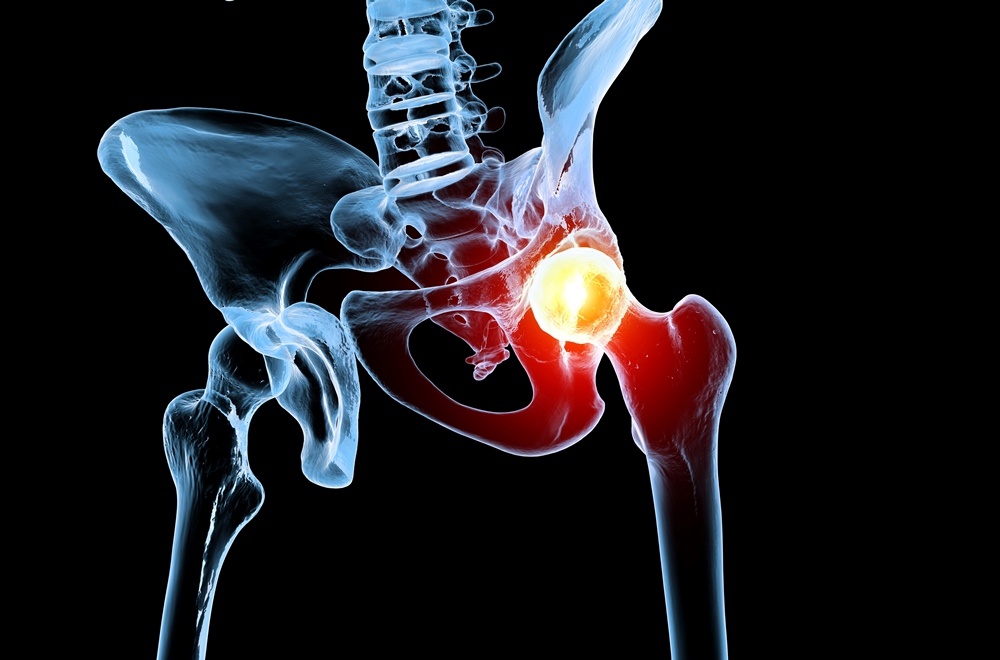Avascular necrosis is a painful condition that many people experience when the blood supply to a bone is lost, resulting in the death of bone tissue and, in turn, leading to further complications, such as the bone collapsing entirely, leading to pain and arthritis in the wrist. When avascular necrosis affects the lunate bone in the wrist, it’s known as Kienböck’s disease.
In this post, we examine what avascular necrosis is, its causes, symptoms, and available approaches for managing wrist problems—including advanced wrist fracture management options for scaphoid fractures and similar conditions.
Definition of avascular necrosis
In its simplest form, avascular necrosis is the complete deterioration of bone tissue resulting from limited or no blood supply to the bone, which prevents natural healing.
Avascular necrosis occurs when there is a blockage in the blood flow to the bone tissue, causing the bone ends to eventually break down and die.
Blood carries the vital nutrients and oxygen that our bones need in order to stay healthy and regenerate. When the blood supply is cut off completely, bone tissue will die, and the affected bone will collapse.
Avascular necrosis is a painful bone condition that can worsen over time, negatively affecting mobility.
This can happen in any bone in the body, but is most common in the lunate and scaphoid.
It’s essential to treat avascular necrosis as soon as possible to prevent the bone from collapsing completely or losing its smooth shape, which can lead to severe and painful arthritis.
Causes of avascular necrosis
- A break in the bone or a dislocated joint, where the blood supply is reduced or cut off such as proximal part of the scaphoid.
- Trauma or injury to the bone or joint.
- Damage to blood vessels.
- Avascular necrosis is also associated with the long-term use and high dosage of steroid medicines.
- Excessive alcohol – reducing blood flow.
- Smoking.
- Cancer treatments involving radiotherapy (which weakens bones and harms blood vessels).
- Fatty deposits, which are now blocking small blood vessels.
- Certain medical conditions, such as:
- Sickle cell anaemia
- Diabetes
- Lupus
- And others.
Symptoms of avascular necrosis
You may start with no symptoms; however, without the correct treatment, symptoms will progress and get worse.
This may lead to joint pain, as well as experiencing pain even when resting. You may also experience limited movement and flexibility in the surrounding joint, making it difficult to carry out everyday activities.
If you are experiencing any symptoms and you have ongoing pain in any of your joints, it’s important that you speak with a medical professional for further advice and examination.
Avascular necrosis treatment
Treatment starts with a thorough diagnosis of the situation. In most cases, this is done via X-ray. If a more detailed analysis is required, you may be sent for MRI and CT scans.
Treatment will also depend on age, current health, medical history, the extent of the disease, the location and extent of the bone affected, the underlying cause, and, of course, your treatment preferences.
Ultimately, with all treatments, the goal is to enhance functionality and movement and prevent further damage.
There are measures you can take to help prevent avascular necrosis from occurring. For example, you can:
- Rest and immobilise the joint in question
- Limit alcohol intake
- Keep cholesterol low
- Monitor steroid use
- Avoid smoking
- Use cold packs
- Heat treatment
Medical treatments can include:
- Over-the-counter medications to help manage pain
- Anti-inflammatory medications to reduce swelling and discomfort
- Assistive devices to support the joint
- Physiotherapy – helping to improve movement
- Surgery.
Surgical options include:
- Osteotomy – reshaping of the affected bone.
- Bone grafts – using bones with attached blood vessels to support restoration.
- Joint replacements – an option for severe cases of collapsed bone without arthritis such as lunate replacement.
It’s essential to note that there isn’t always a straightforward cure for avascular necrosis, as blood flow disruption can be either temporary or permanent. That’s why it’s essential to seek treatment and work with your medical professional on the best course of action for you.
Kienbock’s disease
Problems with our wrists and hands are incredibly common, and we understand that they can cause problems in our everyday working lives.
The good news is that, as specialists in the field, we help find the right treatment plan and approach suited to you and your specific situation.
From initial discussion to examination, treatment, and post-surgery rehabilitation, we’re with you every step of the way.
Specialists in all types of fractures and joint problems. Supporting you when you need us most, if you require scaphoid fracture surgery or treatment for scaphoid fractures, call our clinic today and book your initial assessment.
Call 0808 1010 337.

